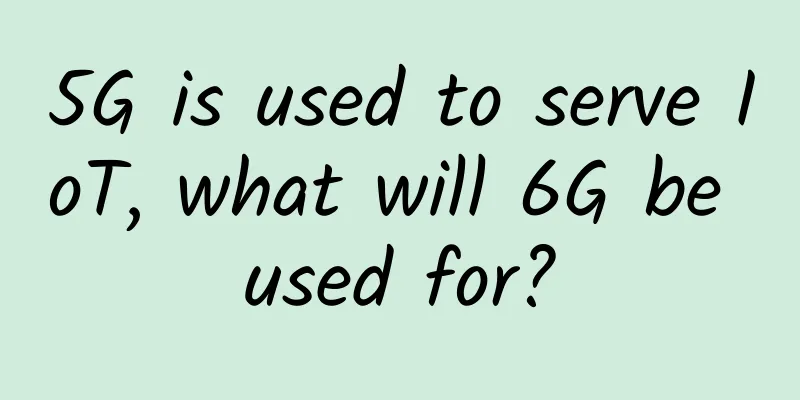my country will promote 5G national standards in 2017 to speed up research and development and seize the right to speak in the industry

|
At the arrival of the new year, China's 4G finally handed in a clear "answer sheet". At the end of 2016, Miao Wei, Minister of Industry and Information Technology, made it clear at the National Industrial and Information Technology Work Conference that the number of 4G users in the country has exceeded 700 million, and the formulation of a unified 5G international standard will be promoted in 2017. 4G is in its infancy and has obvious room for growth, but 5G is already on the verge of being launched. Doubts are inevitable, but after experiencing "1G blank, 2G follow-up, 3G breakthrough, and 4G synchronous accelerated development", China does need to be moderately "bold and ahead". Of course, the road to competing for the right to speak on 5G is not smooth. Whether it is the research and development of key technologies, the synchronous development of application services, or the mobilization of corporate participation, all parties in the industrial chain still need to forge ahead and make rational arrangements. 5G strategic upgrade in the 13th Five-Year Plan China's 4G promotion speed is advancing, and now with the policy boost, the 5G plan has the meaning of "coming from behind". The "13th Five-Year Plan" national informatization planning goals issued by the State Council recently pointed out that in 2018, 5G network technology research and development and testing will be carried out, and 5G technology research and industrialization will be accelerated, the construction and integration of the next-generation radio and television network will be accelerated, the commercialization of the next-generation Internet will be promoted, and future network security will be strengthened to prevent future network security risks. Miao Wei, Minister of Industry and Information Technology, previously stressed at the National Industrial and Information Technology Work Conference that in 2017, China will vigorously promote the development of 5G technology products, standard formulation and industrial chain maturity. Subsequently, Chen Xiaobei, an expert from the IMT-2020 Promotion Group, further revealed at the China Communications Industry Conference that China has made phased progress in 5G key technologies and spectrum. The second phase of 5G experimental specifications has been officially released. In the future, China will work with international mainstream companies to jointly promote global unified 5G standards and industrial development. It is understood that the second phase of 5G experiments currently underway in my country will implement the technical solutions of the first phase for the first time. This year, the focus will be on the technical solutions of different manufacturers, based on unified frequencies and unified specifications, to carry out single base station performance tests and functional, performance and process tests of wireless access network and core network enhancement technologies. It is expected that the first version of the 5G standard will be unveiled in June 2018. The industry believes that China has basically caught up with the international level in the 4G era, and its "standard weakness" has greatly improved. In the 5G era, it will lead the world and "have a certain degree of dominance and voice in the formulation of international standards" is also a trend of the times. The global industrial chain has entered the "5G era" As we all know, 5G is a major theme for the development of the future communications industry. In particular, 5G will create many new business scenarios in the future, and bring great opportunities to equipment vendors and operators. In order to seize the initiative in the 5G market, both operators and key companies in the industry chain have actively deployed 5G. Looking at both China and foreign countries, this has become a "consensus." Take China Mobile, which has been the most active, for example. Li Yue, president of China Mobile, said earlier that China Mobile will attack from all sides in the face of 5G. While "accelerating infrastructure construction, promoting the maturity of 5G standards, and promoting global unification in the field of standard planning", it will actively incubate various vertical applications and promote the in-depth application of 5G in all walks of life. In addition, it will also build an open ecosystem. In 2017, China Mobile will enter a large-scale field test phase and hopes to promote the trial commercialization of 5G in 2018. Looking at the industry chain manufacturers, 5G technology research and development has achieved phased breakthroughs, and many new technologies have entered the prototype and prototype stage. Among them, Qualcomm's 3.5GHz NR prototype terminal prototype is one of the earliest implementation plans in the industry to adopt low-latency DSP control channel processing technology; Huawei's industry's first 3.5GHz band 5G prototype base station can achieve a peak cell throughput of more than 10Gbps; ZTE's 15GHz high-frequency prototype has an operating bandwidth of 500MHz and can achieve a peak cell throughput of more than 10Gbps; Intel's FlexRAN platform for 5G supports the C-RAN cloud access network technology advocated by China Mobile. Of course, this is just a microcosm of the industry chain's efforts to promote 5G. Although the global 5G commercialization has just entered the countdown stage, countries including Europe, the United States, Japan, and South Korea are already competing shoulder to shoulder in the "arena". British Chancellor of the Exchequer Philip Hammond has previously bluntly stated that he hopes that the UK will become a world leader in 5G and play a pioneering role in the 5G field. 5G is still “one step away” in the microphone grabbing stage With policy support and all parties in the industry chain moving forward together, the industry is generally optimistic. However, there is still debate about whether 5G has a bright future. Some industry insiders believe that 5G has not yet been clearly defined. The international mobile communication standards organization 3GPP just finalized the 5G wireless communication related coding scheme in November, and more specifications and standards in related fields are still in a state of competition for dominance among all parties. Some people believe that the "5G sprint" of global operators and equipment manufacturers is a bit impatient at present, which is fraught with risks. William Webb, former director of research and development at the UK Communications Authority, pointed out that the discussion on 5G is too idealistic, the industry has invested huge amounts of money, and in the end, the number of consumers who may need such "5G speed" is far less than expected, but all parties think they see opportunities and promote them with all their strength. In addition, with the strong support of equipment manufacturers and chip manufacturers, the industry expects that 5G applications will be implemented quickly. However, it is still unknown whether the ultra-high-definition image transmission applications provided by 5G can make consumers generous. Another imagination space for 5G is the application of the Internet of Things. Currently, the low-latency network launched by Sigfox in France is a more cost-effective solution than 5G. There is also debate about how 5G will enter the mass market. T-Mobile previously believed that it would take at least 10 years for ultra-high-definition mobile phones to become popular, and it would be better to spend time on research instead of making a bet now. Ericsson is confident about this, emphasizing that when 4G was launched, some people questioned why faster transmission technology was needed when 3G was already available. In any case, the saying in the communications industry that "first-rate companies sell standards, second-rate companies sell technology, and third-rate companies sell products" may seem like a smile, but in fact it hides the helplessness of the domestic industry. After "3G followed, 4G went hand in hand", "5G led" should no longer be a mirage. |
<<: Japanese media: China may be the first to master 5G international standards
>>: 2017 Network and Security Technology Keywords
Recommend
Understanding Observability and Opentelemetry in one article
√Introduction to Observability √Introduce the cor...
What changes will 6G bring by 2030?
We are in the midst of a great digital wave. Inno...
Kunpeng Programmers Spread Their Wings and You Are Here | See you in Shenzhen for the 1024 Kunpeng Programmers’ Day series of events!
On October 24, the 1024 Kunpeng Programmer's ...
The Impact of WiFi Chipsets on Internet Speed and Performance
In today's fast-paced digital world, a stable...
DesiVPS: Los Angeles/Netherlands/India data centers, KVM VPS from $20 per year
DesiVPS acquired LosAngelesVPS a month ago and is...
Sharktech: Los Angeles high-defense server 1Gbps unlimited traffic starting at $129/month, optional 10Gbps unlimited traffic
Sharktech is a long-established foreign hosting c...
The Basics: What are edge devices?
Edge devices are more than just hardware, and wit...
Interviewer: What is your understanding of IO multiplexing?
"IO multiplexing" is a common technical...
Are we technologically ready for the coming era of high-definition video?
[51CTO.com original article] Almost no one doubts...
British Telecom announced that it will shut down its 3G network in 2023 and said it is not in a hurry to launch Open RAN
According to foreign media reports, British Telec...
Five-minute technical talk | A brief discussion on WebSocket protocol-RFC 6455
01 Introduction WebSocket is a network communicat...
Three-minute review! A quick overview of 5G industry development trends in September
Since the beginning of this year, with the introd...
Mid-year review: 10 hottest web startups in 2021
Rising Star If the IT industry has learned anythi...
Shaanxi Kunpeng Ecological Innovation Center actively explores talent training, and two Kunpeng training activities have been successfully concluded
[51CTO.com original article] On November 28, 2020...
My boss told me not to use strings to store IP addresses, no!
[[432371]] How to store IP address data in the da...









